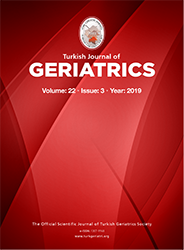Materials and Method: We retrospectively examined the data of patients aged ≥65 years who were admitted to the strabismus clinic between July 2018 and July 2019. The findings of the ophthalmological and orthoptic examination as well as the strabismus etiology, intervention required, and chief complaints were all recorded.
Results: We extracted the medical records of 40 patients (16 female and 24 male) aged ≥65 years who were examined in the strabismus clinic. The chief complaint was diplopia in 30 (75%) patients, followed by ocular deviation in 10 (25%) patients. The deviation was horizontal in 26 (65%) patients. The most common etiology was thyroid eye disease (6 patients; 15%), followed by diabetes (5 patients, 12.5%), hypertension (5 patients, 12.5%), trauma (3 patients, 7.5%), cerebrovascular event (3 patients, 7.5%), intracranial mass (3 patients, 7.5%), and secondary deviation (3 patients, 7.5%). Moreover, 11 (27.5%) patients underwent surgery, whereas 17 (42.5%) patients received nonsurgical treatment; 14 (35%) patients did not re-visit the strabismus clinic.
Conclusion: Strabismus can be seen in elderly individuals. The underlying etiology, such as trauma and cerebrovascular events, may be life threatening and requires prompt diagnosis and treatment.
Keywords : Cranial nerve palsy; Diplopia; Geriatric; Ocular misalignment; Strabismus; Surgery
